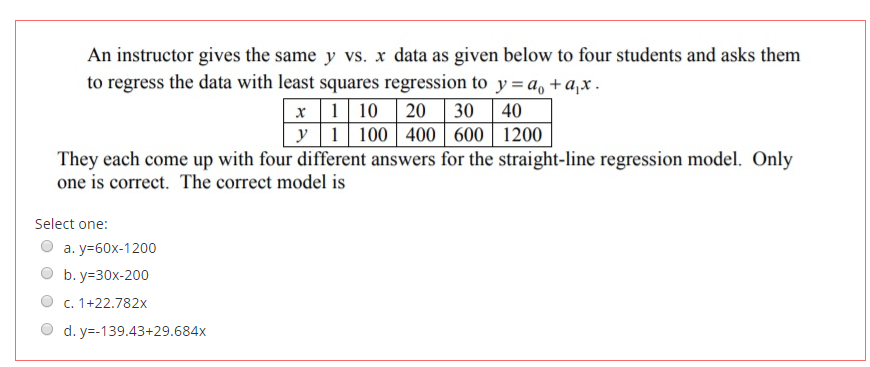

To estimate each of the 4 weights, we’ll use lm(). \(\beta_\) is the baseline value of a diamond with a value of 0 in all independent variables. The linear model will estimate each diamond’s value using the following equation: Our goal is to come up with a linear model we can use to estimate the value of each diamond (DV = value) as a linear combination of three independent variables: its weight, clarity, and color. # weight clarity color value value.lm weight.c clarity.c value.g190

18.5 Chapter 8: Matrices and Dataframes.18.4 Chapter 7: Indexing vectors with.17.4 Loops over multiple indices with a design matrix.17.3 Updating a container object with a loop.17.2 Creating multiple plots with a loop.17.1.2 Adding the integers from 1 to 100.16.4.4 Storing and loading your functions to and from a function file with source().16.4.2 Using stop() to completely stop a function and print an error.16.3 Using if, then statements in functions.16.2.3 Including default values for arguments.16.2 The structure of a custom function.16.1 Why would you want to write your own function?.15.5.2 Transforming skewed variables prior to standard regression.15.5.1 Adding a regression line to a plot.15.5 Logistic regression with glm(family = "binomial".15.4 Regression on non-Normal data with glm().15.3 Comparing regression models with anova().15.2.6 Getting an ANOVA from a regression model with aov().15.2.5 Center variables before computing interactions!.15.2.4 Including interactions in models: y ~ x1 * x2.15.2.3 Using predict() to predict new data from a model.15.2.2 Getting model fits with fitted.values.15.2.1 Estimating the value of diamonds with lm().14.7 Repeated measures ANOVA using the lme4 package.14.6 Getting additional information from ANOVA objects.14.5 Type I, Type II, and Type III ANOVAs.14.1 Full-factorial between-subjects ANOVA.13.5.1 Getting APA-style conclusions with the apa function.13.1 A short introduction to hypothesis tests.12.3.1 Complex plot layouts with layout().12.3 Arranging plots with par(mfrow) and layout().11.10 Test your R might! Purdy pictures.11.8 Saving plots to a file with pdf(), jpeg() and png().11.7.5 Combining text and numbers with paste().10.6 Test your R might!: Mmmmm…caffeine.9.6.3 Reading files directly from a web URL.9.1.1 Why object and file management is so important.8.7 Test your R might! Pirates and superheroes.7.3.1 Ex: Fixing invalid responses to a Happiness survey.7.2.2 Counts and percentages from logical vectors.

To regress x on y code#
4.3.1 Commenting code with the # (pound) sign.4.3 A brief style guide: Commenting and spacing.4.2.1 Send code from an source to the console.1.5.2 Getting R help and inspiration online.That this formula minimizes the squared distancesįrom each of these points to that line. And it actually won't goĭirectly through that line. Going to be that exact, is going to look like that Graph it, and obviously I'm hand drawing it, so it's not To be equal to the mean of the y's, the mean of the And this is the same thingĪs negative 2/3 times negative 9/ 14. What's 49 minus 63? That's negative 14/9. Something over 9, that's the same thing as 63/9. I'm tempted to get out myĬalculator, but i'll resist the temptation. And we just have to do a littleīit of mathematics. So our slope, our optimal slopeįor our regression line, the mean of the x's is The x squareds? The first x squared is just To calculate is the mean of the x squareds.
To regress x on y plus#
To be equal to? We have 2 plus 2, which is 4. And what's this going to be? 1 plus 2 is 3, plus 4 So what's the mean of our x's? The mean of our x's is going To calculate these things ahead of time, and then Like using our formulas, which we have proven. It the best fitting regression line, which we suspect Have the point, let's do something a little bitĬrazy, 4 comma 3. Points, and I'm going to make sure that these pointsĪren't colinear. And of course, whatever you getįor m, you can then just substitute back in this Numerator and denominator by negative 1, which is same thingĪs multiplying the whole thing by 1. X squareds minus the mean of the x's squared. Written as the mean of the xy's minus the mean of x times Numerator and denominator by negative 1, you could see this Textbook, you might see this swapped around. And if this looks a littleĭifferent than what you see in your statistics class or your Really confusing, we're going to do an example of thisĪctually in a few seconds. Going to be the mean of x's times the mean of the y's minus Just rewrite it here just so we have something When you measure the error by the squared distance Slope and y-intercept of the best fitting regression line


 0 kommentar(er)
0 kommentar(er)
